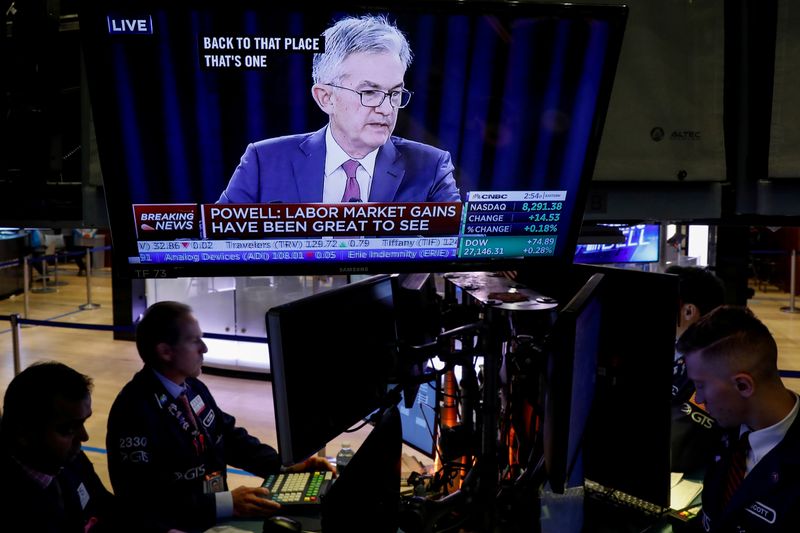NEW YORK (Reuters) – Widespread expectations of a coming U.S. economic boom are forcing bond fund managers to dust off their playbooks to combat a nemesis they have not had to worry about for more than a decade: inflation.
The tepid recovery from the Great Financial Crisis elongated the long bull market in bonds reaching back to the early 1980s, pushing yields to historically low levels. Yet continued accommodation by the Federal Reserve and the anticipated effects of the Biden administration’s $1.9-trillion stimulus plan have pushed up benchmark 10-year Treasury yields to last week touch their highest levels since January 2020.
GRAPHIC: Inflation – https://fingfx.thomsonreuters.com/gfx/mkt/nmopardmnva/Pasted%20image%201616437575583.png
Inflation is anathema to bond investors, eroding earnings over time, but it has not posed a significant threat since well before the 2008-2009 financial crisis. Now, though, the recovery from the coronavirus pandemic is forcing inflation back into the consciousness of fixed-income markets.
“We are going to see some really high inflation numbers in the next two or three quarters,” said Matt Freund, co-chief investment officer at Calamos Investments, who is overweight in shorter duration bonds in anticipation that inflation could reach as high as 3% this year.
“Why would you buy a 10-year bond and lock in a negative real yield for the entire 10-year period?” Freund said.
Sustained inflation will likely depress total returns in the U.S. fixed income market over the next three to four years, bond analysts say. As a result, some investors say they are holding assets that will benefit if inflation rises without taking on the risk of equities, which have stalled as investors price in higher debt costs for consumers and companies.
Mark Egan, portfolio manager of the Carillon Reams Core Bond Fund, said that he is focused on the safety offered in shorter-term Treasuries rather than expensive premiums in the high-yield debt market. He expects that fixed-income funds will post average declines of 2% or more over the next 3-4 years.
“You have to go back a long time to where people can remember a rising interest rate environment for more than a few months,” he said. “The price of safety is relatively low and the price of yield or return is very high.”
BLIP OR HERE-TO-STAY?
The big question for bond fund managers is how long above-average inflation will last.
“Is inflation going to rise in the next couple months? Absolutely,” said Gregory Peters, head of PGIM Fixed Income’s multi-sector and strategy. “But the gravitational pull is for inflation to go lower not higher.”
The Fed sees core inflation – which strips out the more volatile costs like food and energy – rising between a median of 2.0% and 2.2% a year through 2023, while projecting that long-term GDP – one of the main drivers of inflation – will return to 1.8% a year after spiking to 6.5% in 2021.
The U.S. 10-year break-even inflation rate on 10-year Treasury inflation protection securities, a gauge of expected annual inflation over the next 10 years, rose as high as 2.32% on Thursday, the highest since January 2014.
“It seems like the rise in breakeven inflation rates … has pretty much allowed the market to fully price in what they see coming in the way of inflation,” said Greg Whiteley, portfolio manager, DoubleLine. “And now they’re saying we’re seeing stronger real growth alongside inflation.”
Yet the Fed sees an inflation rise as transient. Richmond Federal Reserve President Thomas Barkin said on Monday that he expects some pretty large spikes in prices but it will be a one-time surge.
Indeed, since publicly setting its 2% target in 2012, the Fed has rarely https://www.reuters.com/article/us-usa-fed-expectations-analysis-idUSKBN2BE16B hit it.
Commodities will likely be a winner from inflation regardless of whether it matches or exceeds the Fed’s assumptions, said Brian Jacobsen, senior investment strategist for the Multi-Asset Solutions team at Wells Fargo Asset Management.
The S&P GSCI commodity index is up 15.1% for the year to date.
“This is a sort of the back to the future play that hasn’t been in vogue for a while because we haven’t had to worry about inflation,” Jacobsen said.
(Reporting by Kate Duguid and David Randall; editing by Megan Davies and Nick Zieminski)



















